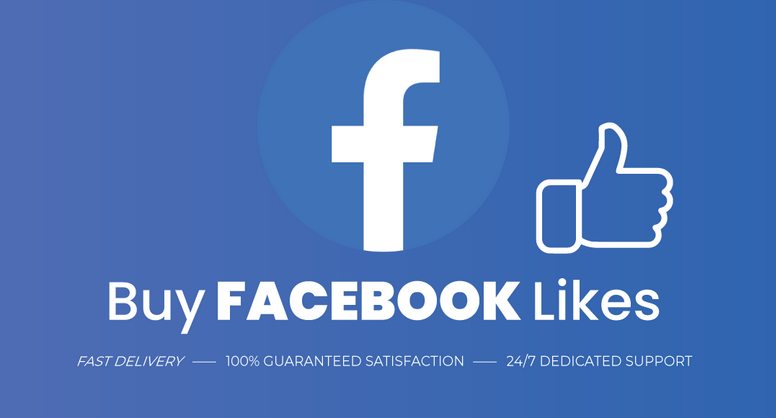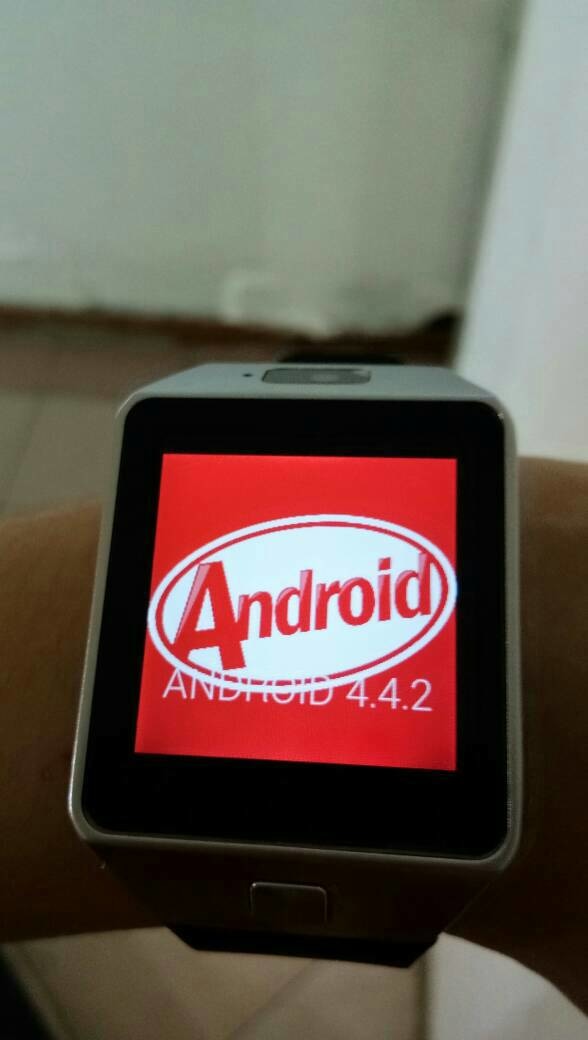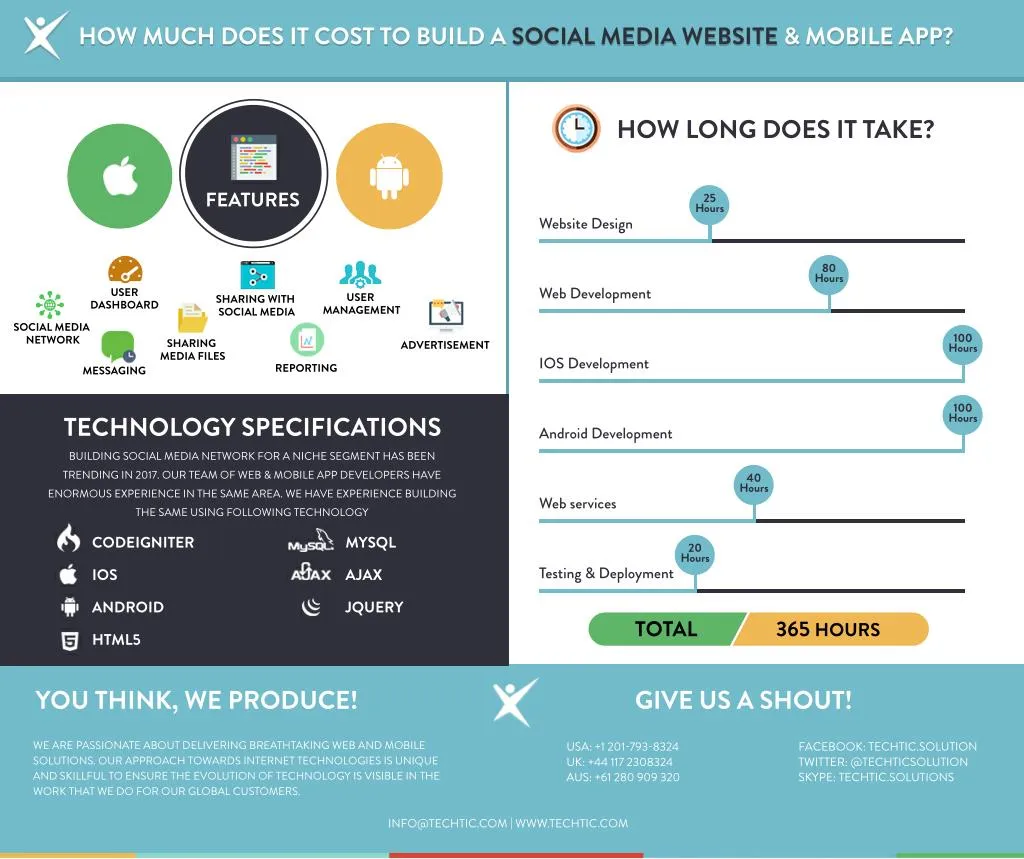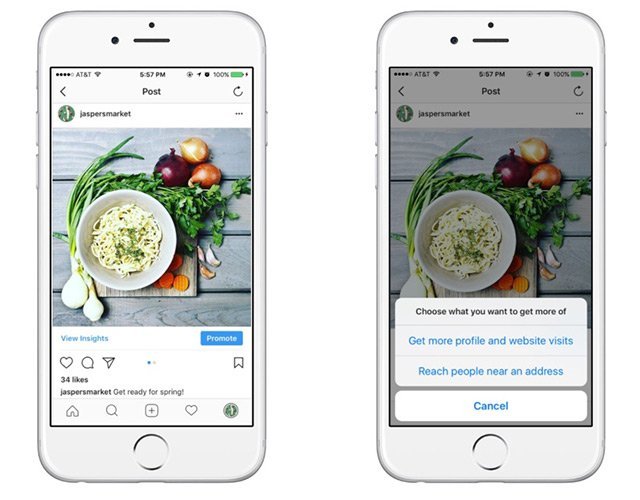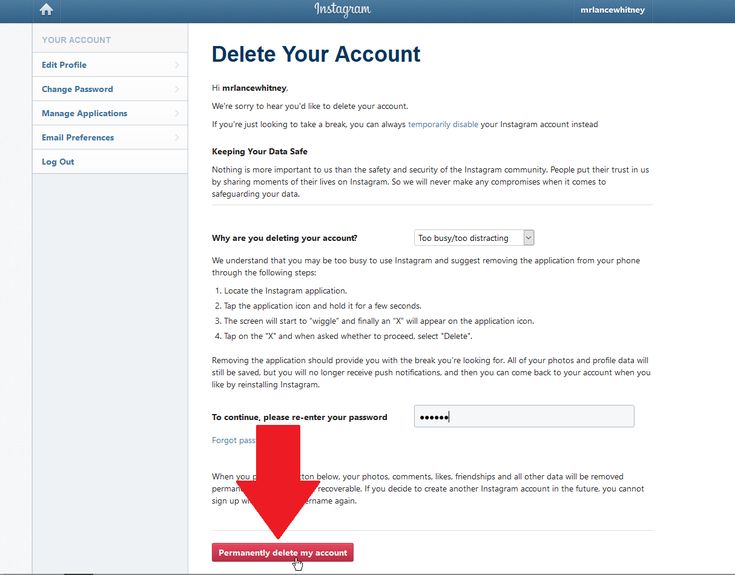How to advertise in a facebook group
How to Create and Grow an Engaged Facebook Group
Facebook now has over 2 billion active monthly users. Nearly 1 billion of those users participate in Facebook Groups.
Creating a group of your own is an inexpensive and effective way to reach your target market.
If you’re not already familiar with Facebook Groups, it’s essentially a community within Facebook’s platform that users can join and participation is encouraged. Groups are built around common interests or goals, like cooking or running, but there are plenty of business-focused groups too.
In this post, I’m going to cover everything you need to know to start and grow your own successful Facebook group and how to use it to market your business.
By the end, you’ll know more than most Facebook marketers about taking a Facebook Group from nothing to something spectacular.
Let’s get started.
Who is Your Facebook Group For?The first thing you need to figure out about your group is who it’s for.
If the goal of your group is to generate leads for your business, your group should attract your ideal customers.
For example, say you’re a graphic designer who wants to work with small businesses or startups. Your group should provide valuable tips for small business owners, like how their brand can make them stand out.
It’s important to have a specific target market in mind for your Facebook group.
There are a few reasons for this.
First, if you can be precise in terms of who you want to help, you’ll be able to describe your group more effectively. When you can clearly communicate how your group can benefit others, you’ll easily attract new members.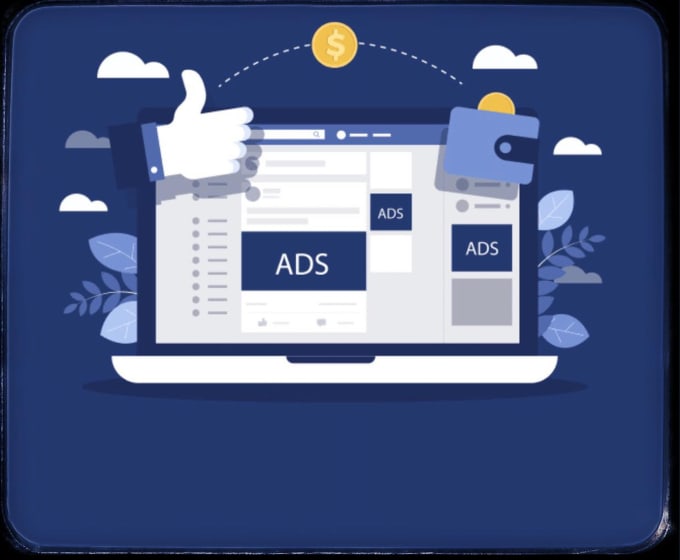
The biggest benefit of clearly communicating the benefits of your group is that it becomes filled with your ideal customers instead of random people.
For instance, imagine you were looking to create a group that provided “dog training advice for Labrador owners.”
Which group do you think your target audience would like to join most?
A group called ‘dog training,’ or a group called ‘dog training for Labrador owners.’
I bet you chose the second one, right?
That’s because the second one sounds like it’s more tailored to the needs of someone who has just adopted a Labrador and is in need of training advice specific to the breed.
The sense of community in the second group is also likely to be higher because there’s an increased level of commonality too. People join groups to be around others like themselves.
So, that’s one reason why you need to be precise when setting up your Facebook group.
The second reason is that it makes it easier for people to find your group.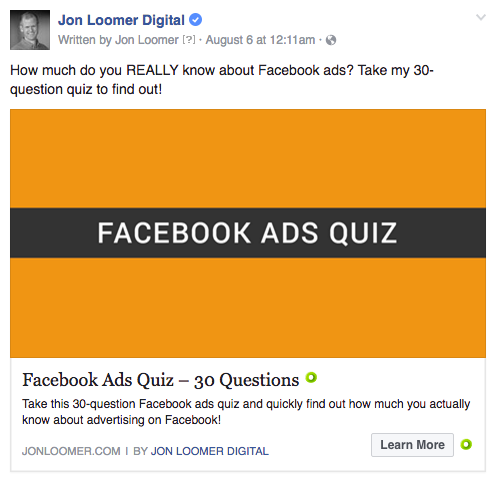
One of the main ways new people will find your group is by searching on Facebook. There are 2 billion daily searches on Facebook.
If you give your Facebook group a specific, keyword-rich name, it will be easier for people to find. Using our Labrador example above, it’s likely to show up for the term “Labrador dog training” but could get lost in thousands of search results for just “dog training.”
How to Create a Facebook groupFirst, log in to Facebook. Then, open the + icon to view the Create menu.
Choose Group, then provide some basic information about your group.
Create a ‘Group Name’ based on the principles we just covered. You might also want to click on ‘Pin to Shortcuts.’ This will ensure that the group can be found in the left-hand sidebar of your Facebook profile.
Next, choose the privacy level. I suggest setting the group to Private so only people who join will be able to see your content. This makes the group exclusive and gives people a reason to actually join (so they can access your content).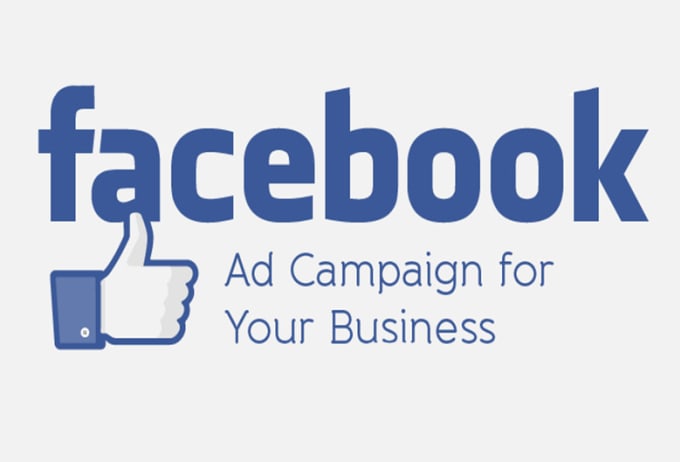
You can screen people who join to ensure that not just anyone with a social media account gets in. Remember, to keep your group high quality; it needs to be informative and not ‘sales-ey.’
Next, choose whether you want your group to be visible (anyone can search for it and request to join) or hidden (only members can see the group exists.) I suggest visible so people can find your group in search.
The last part of setting up your group is to add a friend. This is optional, but it’s a good way to get started.
The best way to get around this is to just add one of your friends. You can always delete them from the group later.
If they’re a good friend, they probably won’t mind!
Click Create, and you’ll be taken to the page where you can update your featured image, manage posts, schedule posts, and add a description.
First, we need to give the group a description. Click on “Add a description” on the right-hand side.
This is what potential members will see when they find your group. Make sure the description is clear and entices people to join.
Make sure the description is clear and entices people to join.
Here’s what I came up with.
Then, click on Add tags (also on the right-hand side) to choose up to 5 descriptive tags for your group. Here’s what I picked:
We then need to give the group a ‘Cover Photo.’
If you don’t have a great photo that matches your group, you can head over to Flickr and find one. Search for something related to your group topic.
I searched for ‘labradors.’
On the search results page, click on ‘Any license’ near the top left and choose ‘Commercial use & mods allowed.’ This means the photographer is okay with you using it to promote your business, or in this case, a Facebook group.
Here’s a cool picture I found.
If you want to download a picture, click on the arrow icon in the bottom right, and then choose ‘Original.’
Go back to your Facebook group page and click on ‘Upload Photo.’
7700Click and drag it around to reposition it until it looks good.
Those are the basics of setting up your group.
There are a few more things we can do to increase its chances of being found in Facebook’s search.
Scroll down the “Manage Group” bar to the left and click on “Settings.”
You’ll then see this page with a few more settings.
First, select a group type. I’ll choose General because I don’t need any of the other features like templates or managing sale items.
If you’re trying to attract people from your area, add a location for your group.
You can also require people to answer questions before they join. This is handy to learn more about your members and see if they would be a good customer fit for your business.
Let’s dive into how to grow it now that your group is set up.
Create a Facebook Page for Your GroupYou may be wondering why you need a Facebook Page and a group.
You don’t necessarily need a page for your group, but if you want to promote your group with ads or with public social media posts, you need a page to do that.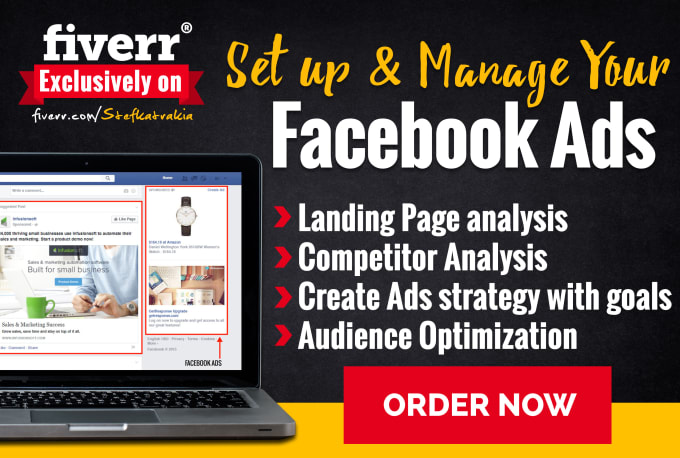
Your group is a private area where only members can view and discuss content.
A Facebook page is a public profile where anyone can see your content. They can “like” your page, which means they’ll see your posts on their personal Facebook feeds.
There are two main benefits to a public Facebook page:
- It allows you to run ads promoting your group (more on that in a bit).
- And, it allows you to freely promote your group via public social media. People who stumble across your page may find your group interesting too and join it.
Setting up a Facebook page is quite similar to a group. Click on the + icon in the menu next to your profile photo and choose “ Page.”
Then you have to choose a type of page to create. I chose Cause or Community since I want to create a community of Labrador owners.
Enter a page name and click Get Started.
Like our group page, you’ll want to spend a few minutes setting up your page. Add a profile photo and a cover photo.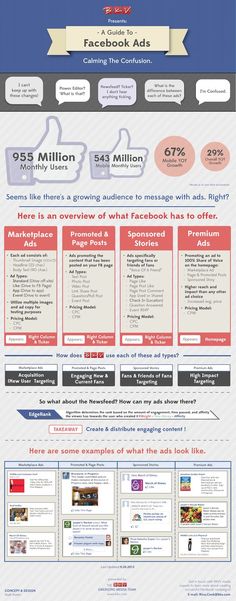 You can use the same ones as your group.
You can use the same ones as your group.
In fact, you should use the same photos in order to associate them clearly. When a visitor sees them, they’ll know the page and group are related.
Then you want to add a description and a bit more info. Click on About on the left-hand menu, then click on Edit Page Info at the top right.
You’ll want to add relevant categories for your page and a description. In the description, promote your group and include the link to it to encourage people to join.
In addition to listing your group in the description, you’ll want to create a pinned post on the page that promotes your group.
A pinned post is just a regular post that an admin has ‘pinned,’ or fixed, to the top, so it’s the first thing everyone sees when they visit your page.
To create one, write a regular post on your page.
Press Publish. On the post, click on the downward arrow at the top right of it and then click ‘Pin to top of page.’
This will keep the post at the top of your Facebook page for everyone. When new visitors check out your page from your ad, they’ll see the link over to your group as well.
When new visitors check out your page from your ad, they’ll see the link over to your group as well.
Let’s explore how to use your page to grow your new Facebook group.
Grow Your Facebook Group with AdsOne of the easiest ways you can get people to join your group is to run some targeted Facebook Ads. Like I mentioned before, running ads requires a page.
Once you’re happy with how your Facebook group and page look, head over to Facebook’s Ads Manager.
Click on the green Create Ad button in the top right.
Then choose Engagement from the list of ad options.
Choose a name for your ad campaign, and make sure to select Page Likes as the goal.
Click Continue to advance to the next section.
What I’m going to focus on now is showing you how to set up a unique audience of Labrador owners. You’ll target your ad to this audience so that you can drive Lab owners to your page, where they can discover and join your group.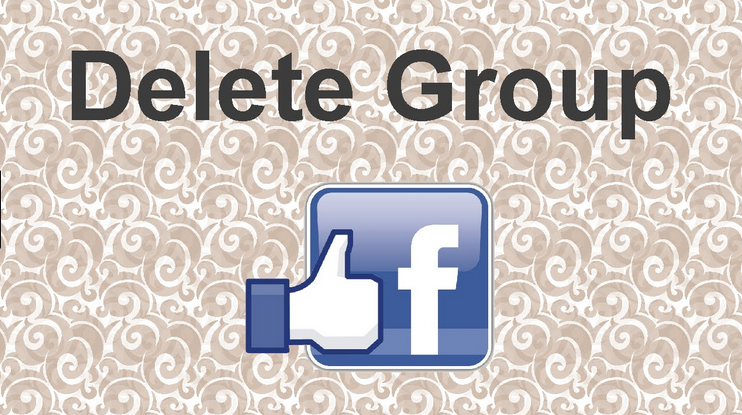
Enter a name for your ad set. I chose ‘Labrador owners.’ Next, pick your Facebook page from the drop-down list.
The Audience section is really important.
This is where you’re going to define who’s going to see your ad.
Since we’re promoting your Labrador training page and group, clearly, we want to attract Labrador owners, right?
First, enter the locations you want to target. I’ve picked Canada, the United States, and the United Kingdom.
The Detailed Targeting section is the most important. This is where you can specify interests and hobbies. Facebook will show your ad to people that fit this description.
Type in “Labrador” to get a list of related interests.
Here’s what I picked for my audience’s interests.
You can also click Suggestions on the right side for interests Facebook thinks are relevant to your audience. This is a good way to find new ones you hadn’t thought of already.
Facebook picked a few good ones for me, like Golden Retrievers, dog owners, and I Love Labradors. I added those to my audience profile.
I added those to my audience profile.
Click Save Audience, and you’re done!
Now you have a defined group of people to target with your ads.
By targeting an ad specifically to people interested in Labradors, you have a good chance of attracting them into your group.
There’s a lot more that goes into setting up a Facebook ad, like writing the content, setting a budget, and more. For detailed steps on how to create effective Facebook ads, read this post, I wrote all about it.
Another method of advertising on Facebook is to promote a post on your page, known as “Boosting,” a post.
You’ll notice this button at the bottom right of all your page’s posts.
If you have a small budget for advertising, it doesn’t hurt to experiment with this tactic.
If you click the button, you’ll see a few options for instantly setting up your ad.
Adjust the budget and timeframe to your liking, then click Boost.
Since this is promoting a post on your page, it’s a good idea to boost a post that mentions joining your group.
Many factors go into a successful Facebook Ad, from the visuals to the written content and especially who it’s targeting. You’ll most likely have to experiment with a few different ads and targeting strategies to achieve the desired results.
After spending $50 or so, you’ll have a much better sense as to whether or not this strategy is working, and if you should continue to boost posts or not.
Once your Facebook page starts to grow, it’s a good idea to promote some of your most popular Facebook posts to see if there is any ‘trickle-down’ effect.
This effect happens when people see your page from an ad, see the pinned post about your group, and jump over and join the group.
Advertising your page and using a pinned post are two effective and relatively inexpensive ways to grow your new group on Facebook.
But you don’t have to spend money to grow your group!
Now I’m going to explain some totally free ways to market your group.
Grow Your Facebook Group Without AdvertisingMore than 1 billion people visit Facebook Pages every month, and there’s an average of 4 million ‘Likes’ every minute! That adds up to 250 million Likes every day.
You just need to get a small slice of that action to see results for your group.
An easy way to do this is by mentioning your group on your Facebook Page from time to time.
Don’t just use your page to drive traffic to your group. The page has to provide valuable and interesting content for visitors too. Otherwise, they won’t “like” the page or follow it for updates.
You already have the pinned post at the top of the page for new visitors to see, so I suggest waiting until your page has around 100 followers (or, “likes”) before mentioning the group again.
This is because your page fans will have forgotten the pinned post by then, but will see your new post in their timelines. Don’t be overly pushy or spammy. Just tell people what they can expect from your group.
Here’s something that I came up with.
Posting about your group should be done no more than once a month, so you don’t start to annoy people who just want to follow your page’s content, but don’t want to join the group.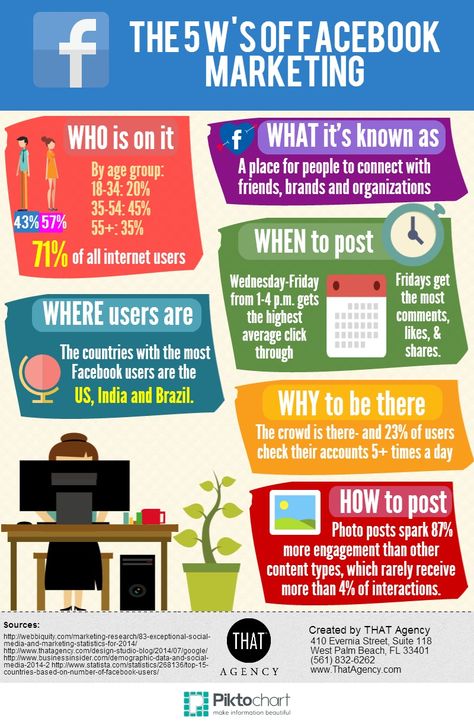
An easy way to post links to your group every month without remembering to do it is to use a social media scheduling tool like Hootsuite.
Hootsuite has a plan that allows you to post to three social media profiles as much as you want. And the best part? It’s 100% free!
Visit their site and sign up.
Once you’re signed up, add your social media accounts.
After signing into your Facebook account, select the Facebook page you want to post to and click Done.
Move your mouse to the top of the page, and the post creation box appears. Write a promotional message for your Facebook group here.
Click on the calendar icon near the bottom right.
You can choose to either AutoSchedule your post or pick a specific date and time to post it. AutoSchedule is great when the date doesn’t matter, as it means Hootsuite will pick what it thinks the best time to post your message is.
In this case, we want to set the date and time ourselves to be sure to space out our group promotion messages.
After you click Schedule, your post will be sent out on the date and time you specified.
Just repeat this a few times to build up several months’ worth of promotional posts in only a few minutes.
Make sure you schedule them about a month apart, so it doesn’t look like you’re spamming your page with requests to join your group all the time.
If you have an email list of subscribers from your blog or website, you can also send them a note to let them know about your new group too.
This is a very effective way of getting new group members, as these are people who are already interested in what you have to say.
Grow Your Facebook Group by Promoting it in Other GroupsAnother extremely effective strategy you can use to grow your Facebook group is cross-promotion.
There are over a billion groups on Facebook, so chances are there are some similar ones to yours.
Cross promoting your group in other related groups is a great way to grow it quickly. However, you also want to be mindful of each group’s rules about self-promotion.
However, you also want to be mindful of each group’s rules about self-promotion.
Many groups don’t allow you to just drop in, make a post about your own group, and leave. It’s disrespectful, so make sure that you’re not just spamming these groups with your link.
You wouldn’t want someone doing that in your group, right?
To find a group to promote yours in, search for topics related to your group on Facebook.
Carrying on with my Labrador training example, I typed in ‘dog training tips.’
Find a group that has at least 50 members.
Here’s one that’s quite popular with over 1,500 members.
Join the group and provide value in at least three to five posts before talking about yourself. Look for questions from others you can answer and leave a thoughtful, genuine comment.
Remember, it doesn’t do any good to just run in, drop your link, and run out. People will tune out if they think you’re just there to promote yourself.
Take a bit of time to be helpful first, then promote your group.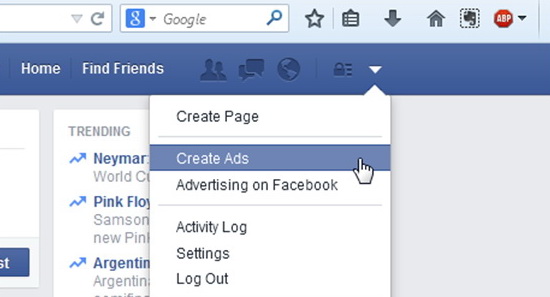
Some groups have strict rules about promoting yourself and say that you can’t just make a post on the group page, but instead can only post as a comment in a weekly promotion thread, like “Promo Fridays.”
The group rules are usually written in the description, so take a look before making a post.
Groups may also have a pinned post to the top of the page that details their rules or links to them, like this one:
Make sure you review the rules and post accordingly.
Here’s something I posted to promote my Labrador group.
I made a point of asking a question to the group, instead of just saying, “Hey, I have a group for Labradors, come join!”
You can also cross-promote your group by contacting the group admin and asking them to help market your group. In exchange, you could link over to theirs from your group too.
Not everyone will take you up on it, but it’s worth a few minutes of your time to try!
Most groups list the admins in the description, like this:
I’m going to assume that Sally created the group since she’s listed first.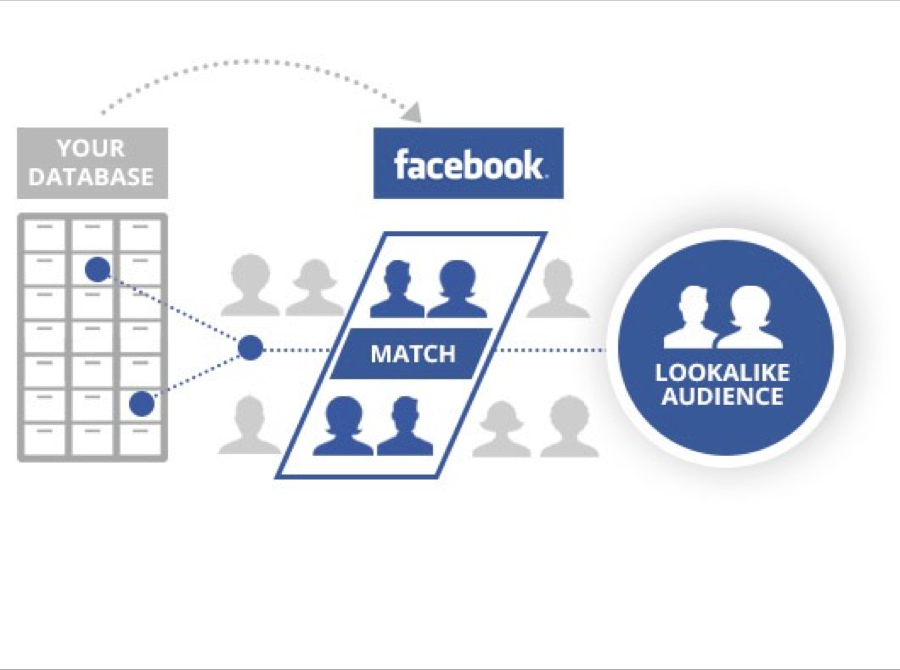 I’m going to send her a message.
I’m going to send her a message.
Click on the Members tab on the left side.
Then, click on Admins.
Scroll through until you find Sally (or search at the top right!).
Click on her name and you’ll be taken to her profile. Click Message.
I wrote Sally a quick but nice message about promoting each other and included a link to my group. It only took a few minutes and could result in a lot of exposure for my group if she agrees to promote it.
Chris from STB Collaborations used this strategy to grow his Facebook group by 923% in just three days!
He left a post promoting his group about living in Asia on other large groups in his niche. He made sure to include a nice note to the group admin that he’d have no hard feelings if they deleted his post.
Some deleted it, but others were more than happy to help Chris promote his Facebook group.
Chris also used what he calls his “Super Fans,” the highly engaged members of his group, to attract new members. He created a private chat with his top 25 fans and asked for their help growing the group.
He created a private chat with his top 25 fans and asked for their help growing the group.
He says this was crucial to growing his group so quickly for free.
His Super Fans ensured posts welcoming new members went out often, kept offensive posts from being seen, and helped approve new member requests quickly.
This leads us to another easy way to grow your group.
Encourage Existing Members to Promote Your GroupLike Chris did, you can use your group’s existing members to help attract new ones.
Exactly how you do this will vary on what your group’s about and how many members you currently have.
As a good first step, you can simply make a post in your group asking people to share it. Let them know you want to make this group the best and most popular one for your topic, and you need their help to do it.
People like to feel helpful.
In fact, a study conducted by The New York Times found that people shared content on social media for five main reasons:
- To reveal valuable and entertaining content to others.

- To define themselves to others.
- To grow and nourish relationships.
- For self-fulfillment.
- To get the word out about brands and causes they like or support.
Appeal to your group members’ emotions by letting them know how much their sharing helps grow the group, and how much you appreciate it.
Another option to get your members to share the group is to run a contest.
Contests are very effective, for obvious reasons. Everyone likes to win!
Your contest winner could be the person who gets the most new members to join the group. At the end of the contest, get everyone who invited others to tag who they brought into the group in the comments section of a post.
Additionally, you could run competitions for each milestone that the group reaches.
So, for my Labrador group, I might say that for every 100 members who join, I’ll do a $100 giveaway of dog-related goodies.
In these posts, I could also ask members to invite people they know to join and enter the giveaway.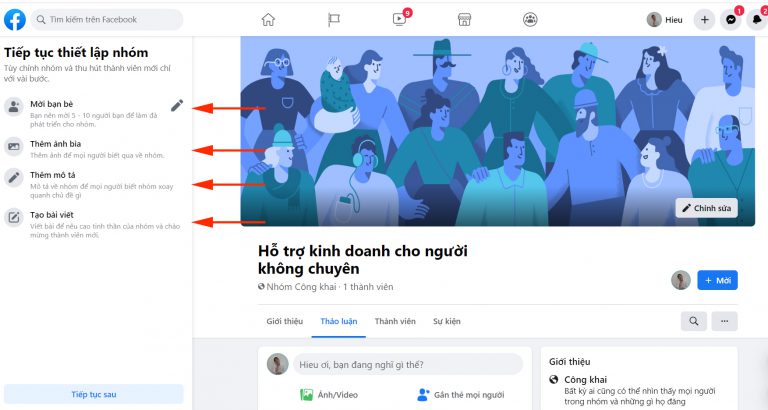
According to Facebook, the average user has 155 friends.
Surely your members will think that at least a few of their family and friends would like to get in on your Labrador group and win some dog goodies.
Encourage Influencers to Join Your Facebook GroupAnother way to grow your group is to get influencers in your niche to join.
This may be hard to find for certain industries, like my Labrador example,, unless I can attract a top dog trainer like Cesar Milan or someone of his fame!
The main idea is to promote some of the influencer’s content and then tag them when promoting their item.
You should do this on your Facebook page because what you post here will be public. The influencer will see that you tagged them in a post and may comment on it or share it with their audience.
If you tagged an influencer in your Facebook group, they wouldn’t see it unless they were already a member.
By tagging them in your public post, the influencer will be notified, and they’ll potentially check out your group.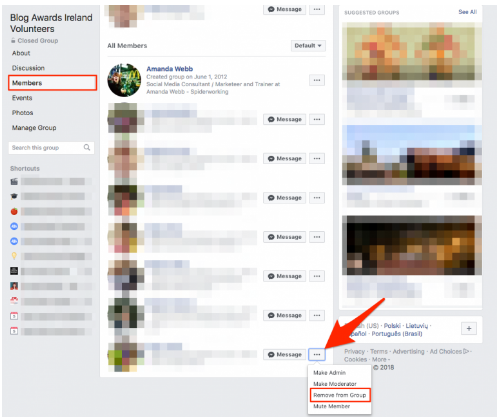 Hopefully, they’ll also become a member.
Hopefully, they’ll also become a member.
As other people see that the influencer is a member, they may join your group simply out of curiosity. Their thought process is that if the influencer is a member, surely the group must be good!
Here’s how the tactic worked for Ryan Stewart, who managed to get Matthew Barby to join his Facebook group.
Ryan made a post on his Facebook page, sharing one of Matthew’s articles. He also tagged Matthew in the post.
Then, Matthew became a member.
If you’re not sure how to find influencers, just take a look at people in your niche that have many social media followers.
Influencer marketing can have a huge impact on your group’s growth, especially if you’re just starting.
For more information on using influencers in your marketing strategy, check out my step by step guide to reaching out to influencers.
Promote Your Facebook Group on Other Social Media PlatformsYour target audience doesn’t just hang out on Facebook.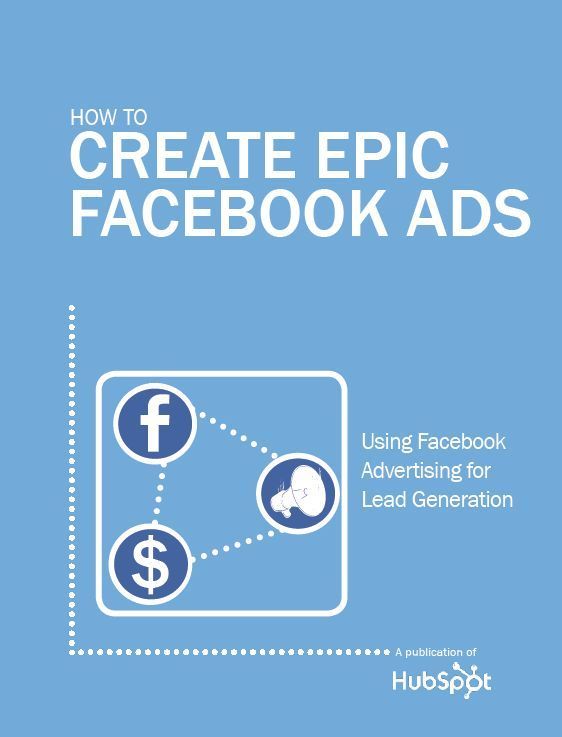 Promote it on Twitter, Instagram, Pinterest, LinkedIn, etc. You get the idea.
Promote it on Twitter, Instagram, Pinterest, LinkedIn, etc. You get the idea.
Facebook is still the king when it comes to user engagement, but Instagram is growing fast.
This means that even though people might use another social media channel, many of them will still check out Facebook at least once a day.
Why not make it so that the reason these people check Facebook is to see what’s going on in your group?
Make sure posts that promote your group make it into your regular posting schedule on all your platforms.
You can even tweet or mention other influencers to let them know you have a group that might be of interest to their followers. Ideally, they’ll see your group as beneficial to their audience, too, instead of you competing with them.
If you’re struggling to get people to join your group this way, consider using a gated content approach.
The gated content approach means you might not tweet about the group itself but instead post about a piece of content that can only be found in the group.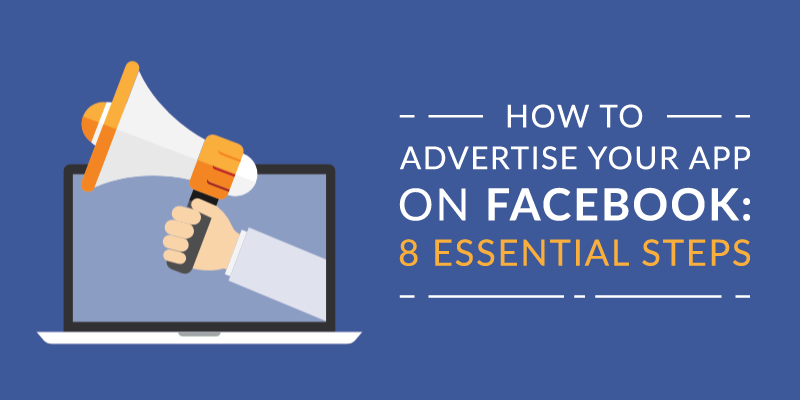
The content could be a free video training, a guide, a PDF checklist; you name it. For my Labrador group, it could be a video showing you how to train your dog to fetch.
You would then let people know that there is some awesome content available inside, and they should join.
I frequently feature my podcast on my social channels to drive traffic to it. The same goes for a group.
When you link over to special content that’s found only in your group, you need to store it in your group.
Here’s how to do that.
Go to your group’s page, and hover over the More text on the post creation area.
Click on Add File to upload a PDF or other type of document. You can add a note about what the item is too.
Most people don’t know where the files are kept in a group, so it’s a good idea to include directions in a pinned post at the top of your group.
How to Make Your Facebook Group SuccessfulSo far, we’ve covered what you can do to get people to join your group.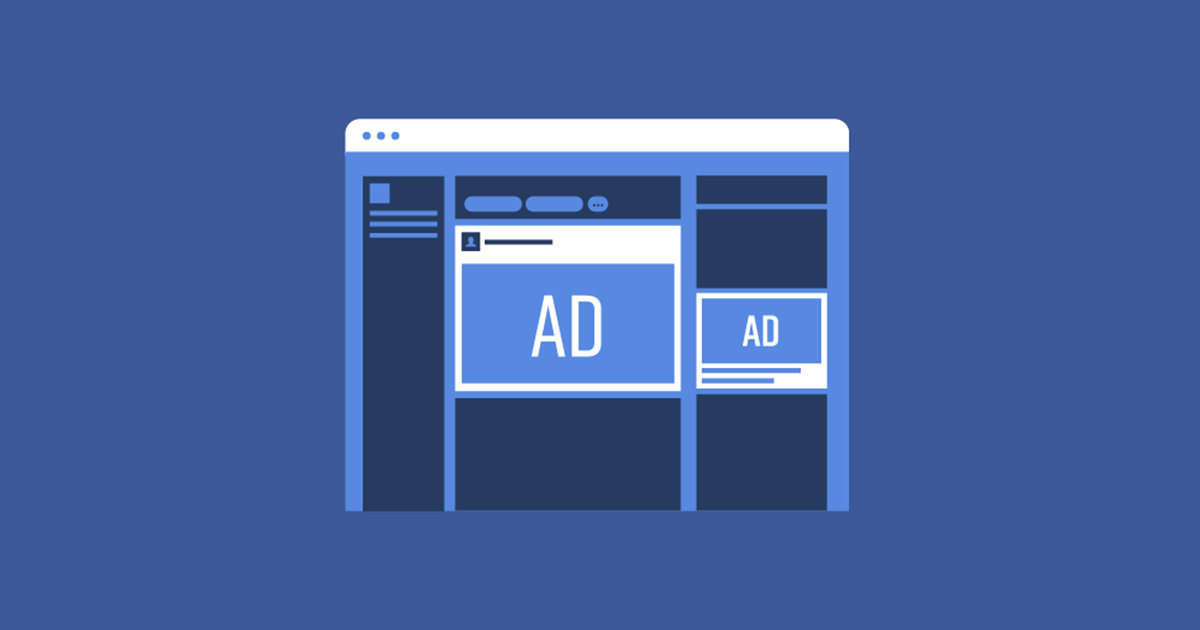
But what is more important is figuring out how to get people to stay in your group and actively participate.
If you can figure out how to get people involved, your group will maintain itself.
The first thing you need to consider is how you’ll deal with spam.
How to Prevent Spam in Your Facebook GroupSpam can quickly kill a group. No one likes to receive messages that are not going to be of use to them or that are just overly self-promotional. Don’t make your good group members abandon ship due to spam.
If you’ve chosen to set up a ‘closed’ Facebook group, spam shouldn’t be too much of an issue because you’ll approve new members.
However, there will always be a couple of spammers who manage to slip through by appearing normal at first.
If you see someone post something that resembles spam, send them a direct message and let them know that what they’re doing is against the group rules. If they continue to abuse the rules, kick them out.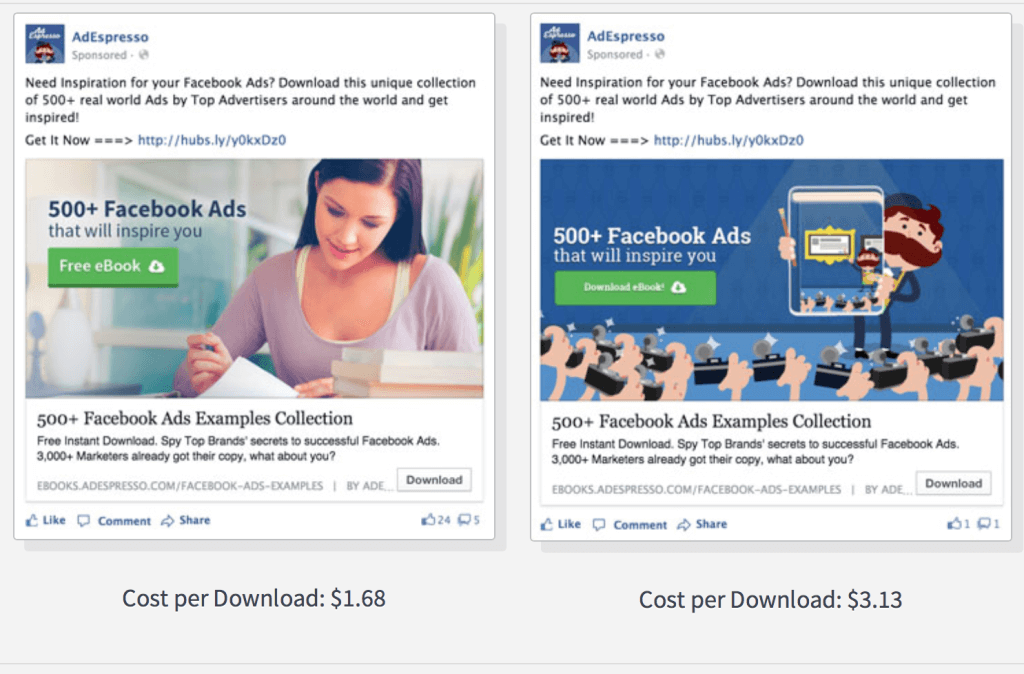
It takes a little bit of monitoring to keep your group enjoyable for all, but it’s well worth it in the end. To make your rules really obvious, I recommend creating a pinned post that explains all of the rules in detail.
Then there’s no excuse for people not knowing how to behave in your group.
You could even mention the rules in the description so that people know this information even before they join.
Here’s an example from Ryan Stewart again with his group rules.
If you do happen to ban someone, it might be a good idea to provide a public explanation as to why you took that course of action with a specific user.
This will let people know that you were fair, but it will also serve as a warning to other people who might be thinking of acting in a similar manner.
If you really want to crack down on spam, you might want to make it so that each and every post within the group is approved by an admin before it gets posted publicly.
You can adjust this setting on the ‘Group Settings’ on the right sidebar of the manage group page.
This may sound like a good idea, but it could be more trouble than it’s worth.
Potentially engaged users may find it offputting to have to wait for their post to show up, and monitoring and approving every single post is going to take up a lot of your time.
Having to approve every post stops the free flow of conversation that groups are meant to establish.
Eventually, you can hire a moderator who can take care of the admin side of things for your group if you choose to.
More often than not, there will be someone within the group who will be happy to do this for you for free because they see it as giving themselves authority within the group by helping out.
A good example of this is the recent phenomenon of “Buy & Sell” groups.
These are hyper-local groups, often covering just one neighborhood or city, where members can post items for sale and bid on items to buy. Kind of like a new age garage sale.
These groups sprung up organically by people looking to sell and buy items.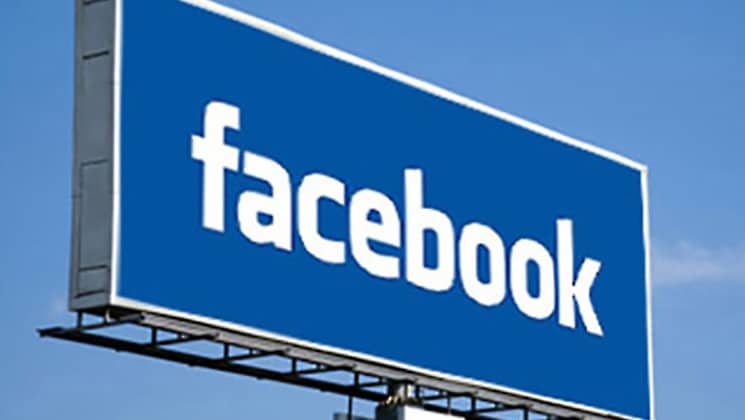 The popularity of them caused Facebook to introduce the official “Buy & Sell” group type, which gives groups additional features like prices and for sale listings.
The popularity of them caused Facebook to introduce the official “Buy & Sell” group type, which gives groups additional features like prices and for sale listings.
There have been cases of people scamming or deleting posts if the buyers didn’t offer enough in a “best offer” post.
To combat this, large groups often have 20 or more admins monitoring posts and keeping things fair. These large groups, often with 50,000 members or more, function like small cities, and the admins are the court justices and police officers keeping them running.
Finding at least one person who is able to help you moderate a group is a good idea once the group gets to a certain size, usually around 1,000 members.
Freeing up your time managing it will allow you to be more active in conversations and creating useful content.
Other than dealing with spam, there are other actions that you’ll need to take to ensure that your group is a place worth hanging out in.
Encourage EngagementAn important role you have as a group owner is to encourage interaction and participation.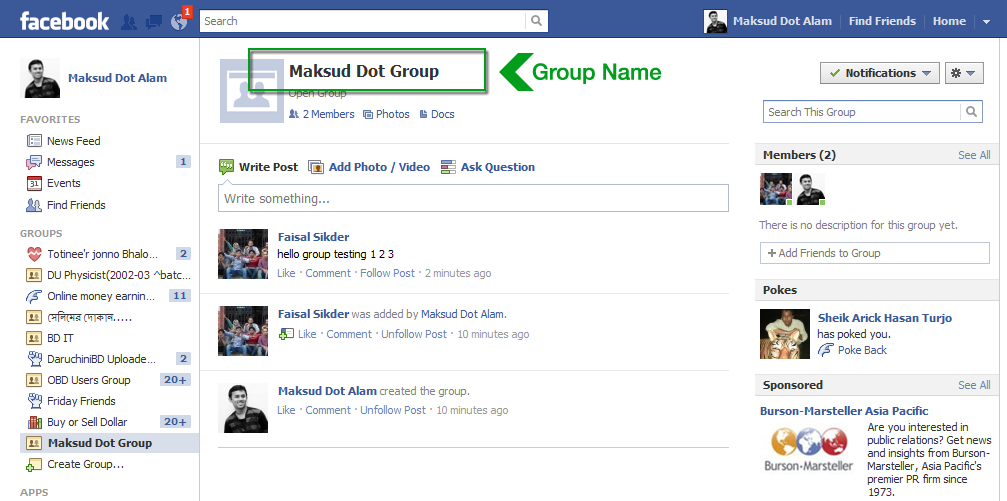
You can do that by asking some questions that help you engage with your members. If you know your niche well, coming up with great questions shouldn’t be too hard.
However, if you’re dealing with a new niche, you might need some help when it comes to forming engaging questions that will get your group members talking.
One tactic you can use is a simple Google search.
Search for a question relating to your niche, but make sure to use words like “why,” “how,” or “are” at the beginning.
Here’s an example of how that can work.
Here’s what came up when I used the word “are.”
As you can see, there are some interesting topics here that I can use to prompt discussion in my group.
One of my group goals is to get people telling personal stories.
For instance, I could ask my group members, “What’s the most intelligent thing your Labrador has ever done?”
Or, “Do you have any funny stories about your Labrador obsessing over food?”
When doing this, share some of your own stories to get the discussion going.
By encouraging discussion, you’ll increase the odds of the group becoming self-sustaining as people begin to know each other better.
Use Polls to Drive Facebook Group EngagementYou can even create some ‘Polls’ using the questions you find in your Google searches.
To do that, start a new post on your group and hover over the ‘More’ text, then choose Create Poll.
Then go about asking a question and providing some options.
Once it’s done, here’s what the polls will look like:
Your members can click an option to answer the poll, or leave a more detailed comment on the post.
You may also want to introduce each of the members that have joined the group that week and request that they share some information about themselves.
For my Labrador Group, I might ask that people share a picture of their beloved Lab when they join. People love sharing photos of their pets, so it’s a pretty easy thing to ask them to do.
Use Theme DaysYou can also encourage participation by having themed days in your group.
These are posts you make on the same day of the week about a certain topic. In the post, encourage users to weigh in with their thoughts or contribute in another way.
In the popular writing group, The Copywriter Club, the group admins have set Tuesdays as a promotional day and called it “Tuesdaytacular.”
Having a weekly theme gets your members into a routine. They know that they’re allowed to share self-promotional stuff on Tuesdays, so they’ll save up content to post on that day.
Some groups even have a theme for every day of the week!
Themed days may not work for every niche, but it’s worth trying out to see how your members respond.
Offer Exclusive Facebook Group ContentAnother way to encourage participation in your group is to offer exclusive content.
This is similar to the approach you’d take with gated content that I mentioned earlier. However, instead of having a post that leads to your group, you’re producing content to improve retention within the group.
The goal is to retain and engage existing members, not attract new ones.
That doesn’t mean that the same kind of content can’t be used to do both jobs at the same time.
Exclusive group content could include PDF guides or free eBooks that you’d otherwise charge for but are giving away for free in your group.
If you’re struggling to come up with good ideas for content, why not just ask people within the group what they’re struggling with? Create a poll for your members to answer.
Then, create content based on the answers people tell you.
There’s really no better way to find ideas for content than to just ask the people you’re creating for. It sounds simple, but it works.
Videos in your group are also an effective way to drive engagement, which I’ll cover next.
Grow Your Facebook Group Engagement with Live VideoFacebook introduced live videos back in 2016, and it’s taken off extremely well since then.
Known as Facebook Live, it allows anyone to start broadcasting live video on their Facebook profiles, pages, and in groups.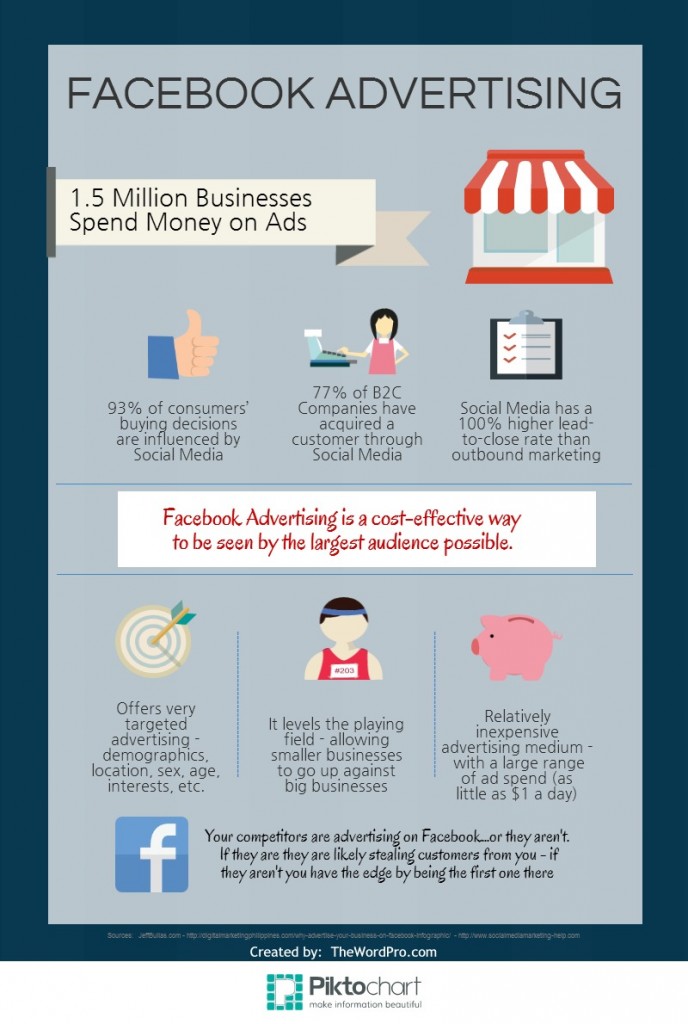
An interesting statistic is that users watch live videos 3 times longer than they would watch a recording, signaling that people get really invested in what’s happening ‘in the moment’ and want to find out what happens next.
If your Facebook group is for your business, live video is the next big thing to use to attract new leads and clients.
A study found that 80% of users would rather watch a live video than read a blog post.
Maybe I should make a video about live streaming instead of writing this, huh?
Melyssa Griffin, a popular business blogger, and teacher uses live video a lot in her Facebook group for entrepreneurs Online Business BFFs.
She delivers valuable content, with many videos exceeding 20 minutes in length, and answers her members’ questions in real time. She also does a good job of linking over to her website to encourage new registrations.
Live videos don’t always need to be about pushing a product or service though.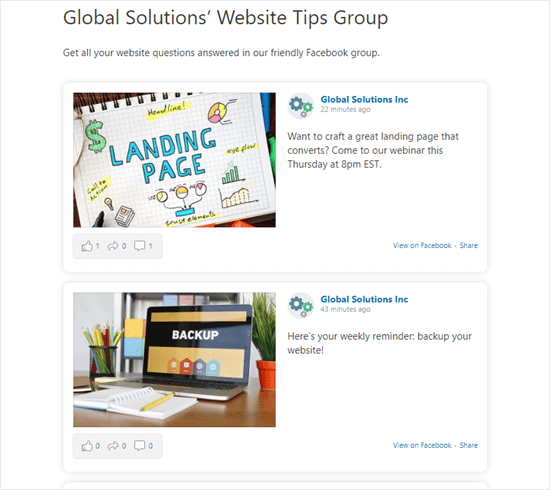 You can use them just to build good rapport with your members and encourage discussions.
You can use them just to build good rapport with your members and encourage discussions.
Melyssa also does a lot of that by sharing some of her personal stories about entrepreneurship without selling anything.
These videos are simply a way to engage with her very loyal audience and inspire them.
Video goes a long way toward establishing trust. When your audience can see you, especially live, they are much more inclined to connect with you and see you as a credible and trustworthy person.
ConclusionRunning a Facebook group can provide a great source of leads for your business, or just be a fun place to connect with other like-minded people, depending on your goals.
However, you can’t just create a Facebook group and then expect it to automatically thrive. You can’t expect leads to roll in immediately, or thousands of members to join in.
You need to work hard to market it in the beginning to get it going.
Once you can be found in Facebook’s search and become known for exclusive content, your group will start to grow organically without a lot of effort.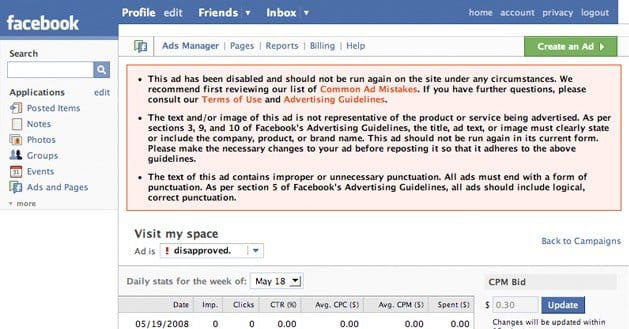
To stay successful, however, you need to keep high-quality conversations going. Engage your members, respond to their posts, provide real and insightful answers to their questions.
Maintaining a group can take just as much time as marketing it in the beginning. You’ll have to deal with approving members, monitoring and deleting spam, and enforcing group rules.
Eventually, you will be able to hire someone who can take care of all of these duties for you. This will free up your time to create awesome content for your fans to ensure they remain loyal fans.
Do you already have a Facebook group? What have you found to be the best strategies to grow your members and engagement?
See How My Agency Can Drive Massive Amounts of Traffic to Your Website
- SEO - unlock massive amounts of SEO traffic. See real results.
- Content Marketing - our team creates epic content that will get shared, get links, and attract traffic.
- Paid Media - effective paid strategies with clear ROI.
Book a Call
Placing Your Own Advertisement on a Facebook Group | Small Business
By William Lynch
Embracing social media helps your business gain an edge on the competition, particularly when it comes to marketing. In December 2011, Forbes reported on two studies from marketing research firm NeuroFocus that revealed Facebook advertising proved more effective and engaged people's emotions better than advertising on other websites or even television commercials. By placing free ads within Facebook groups, where all participants share a common interest, you can reach a targeted audience without spending money on intricate marketing plans or extensive advertising campaigns.
Targeting
-
Facebook permits keyword searches to pinpoint groups appropriate to your advertising goals. Search filters may also restrict results according to a number of different factors, including age, sex, location, education level and relationship status.
Such detailed searches allow more precision when targeting potential customers, to avoid wasting ads on the wrong demographics.
Content
-
The best Facebook group ads are simple text files containing all pertinent details, such as product description and price, and a link to your business website or Facebook page. You may include a picture or even a video for a more eye-catching presentation. Copy written will lure as many customers as possible. Composing clear, concise ad copy in a basic text editor program will reduce the chance of formatting errors when you post the ad to Facebook. Writing several different ads keeps the message fresh and avoids annoying potential customers with repetitive copy.
Posting
-
To post an ad on a Facebook group's wall, you simply open the selected group, paste the copied ad into the comment window and submit it. Other group members who see the ad may post comments or questions, and interested parties can click the included link to visit your business website, creating a direct connection not found in traditional print advertising or television commercials.
Considerations
-
Some groups have posted rules prohibiting users from advertising, and Facebook itself monitors the frequency of group postings. Flooding groups with an excessive amount of ads in a short time may result in an account suspension or, in extreme circumstances, termination. Network Marketing Online recommends posting to no more than three groups in quick succession, and then taking a five-minute break before sharing your ad with another three groups.
References
- Facebook: Groups Basics
- Forbes: Why Ads Grab You More on Facebook Than on TV or the Web
Writer Bio
William Lynch has been a freelance writer for the past fifteen years, working for various web sites and publications. He is currently enrolled in a Master of Arts program in writing popular fiction at Seton Hill University. He hopes to one day become a mystery novelist.
How to Advertise on Facebook for Free? | 7 Effective Examples
To change the title and URL, under the page icon, go to the "About" section and click "Edit" next to the page name. Please note that the system allows you to change the name only once a week.
This method is so effective that our business page (the restaurant Ile-de-France does not actually exist) has already ranked fourth in the search results for the query "French Restaurants in Springfield" (the first three positions are top 3 real restaurants with address and customer reviews).
Second, you need to add information about your business to the cover of the Facebook page, to the description and other similar fields. So, in the case of our restaurant, the cover can be a beautifully designed menu (not all, but key dishes), information about promotions, prices, or key benefits of your business. If we are talking about an online store, then there may be information about promotions, unique offers, contests, sales, and more.
To add text to the cover, you need to click on it and then select 9 on the right0007 "Add a description". Here you need to write about what is posted on the photo, and about other current offers. The text must contain keywords.
More business information should be added to the short description of the page. And there you also need to use keywords: service or product + location.
3. Publication of "catchy" content
Here you need to remember and use a simple rule: it is important not just to write, but to collect a reaction. If the posts will not collect comments, likes and reposts, then Facebook will not promote them in the dynamic feed and therefore no one will see these posts. Therefore, you need to write not only about what you sell, or about professional, but also about what is interesting for your target audience.
Anything can come into play here. From well-formed quotes, as Free People did:
To beautifully crafted calls to share your post like Jim 'N Nick's Bar-BQ did:
In order to add naturalness to your posts, you can take pictures of your customers, as they did at The Bistro restaurant. This is not only a great post for your feed, but also free likes and reposts, since the hero of the photo is unlikely to refuse to share it with his friends. Online stores can use a similar technique, only in their case it will be a discount or a bonus for a live video of the unboxing of the goods - this is also, in fact, free advertising.
More Facebook statistics says that users of this social network really enjoy watching videos: on average, each user watches at least one video per day, with organic video having 43% of "total views", while paid video has 31%. This is also worth using when posting short videos or using live broadcasts.
In addition to the above, you can also ask questions, write guides, give interesting statistics or make funny memes (photos or gifs), where 9 is somehow beaten0007 your business or industry. Such messages attract users and help to increase the number of subscribers.
But here you need to strike a balance between:
- what do you want to write about in the post;
- what the target audience wants to read;
- what benefits your business.
You need to start with posts about what the target audience wants to read about. In some of these posts, you need to add text or pictures with messages that are useful for your business (brand information, links and calls for a targeted action, etc.). Direct advertising should be up to 20%.
At the same time, it is desirable that all images and texts be optimized for Facebook and Google algorithms (organic traffic can also come from here). For example, you can use Google Trends to find out what is trending right now, the Keyword Tool to search for keywords, Canva or Crello to create and edit photos and other images.
4. Unique offers and competitions
This includes everything that benefits the visitor: promotions, discounts, bonuses, limited offers and more. All this can be used as free advertising on Facebook, if you link the benefit to a like or a repost. For example, everyone who likes will receive a 5% discount, and who reposts - 10%.
Such discounts may be temporary or permanent. For permanent discounts, you can ask for more: “1% discount forever for every 1000 invited subscribers, maximum 10%. The promotion is valid until the New Year. Similar offers are marketing with elements of gamification, which even more encourages people to advertise your business for free (discount cards offer everything, but not everywhere you need to “pass the quest” and earn a reward).
Tips on how to use discounts and promotions for free advertising on Facebook:
- The reward must be valuable. The discount or benefit from participation in the promotion must be significant enough for the user to want to become a participant in it.
- State clearly what needs to be done. Tell the user exactly what they need to do to win the prize: "Click here", "Attach this image to..." or "Invite 10 friends".
In this case, you should always make a note or give a link to the rules.
- The process should be simple. A large number of steps repels people, even if the reward is worth the effort. For example, the condition “Invite 10 customers” is easy, while “Invite 100 people who love kart racing to the group” is difficult.
- The issuance of a reward should be simple and fast. It is desirable that this happens automatically, for example, using the built-in Facebook functionality called “Offers”.
5. Promotion through profile groups
Another way for free to place ads on Facebook is groups. You can create your own group and use it to communicate with customers or use others to attract users to your page or perform a targeted action (purchase, go to the site, download the application, etc.).
To create your own group, go to the home page and click on the "Groups" icon on the left side of the screen.
Then press “Create Group” and in the window that opens, specify the name of the group, add those users from the list of friends whom we want to invite to the new group, and also indicate which group we need: private or public, visible or hidden (business needs a public, visible all group).
Next, you need to add a cover and enter information about the group. After that, you can add posts designed not so much for sales, but for increasing the loyalty and involvement of people. In fact, a group for business is another means of feedback, which is also useful for brand promotion.
As far as promoting your business with the help of other people's groups in Facebook, , the first thing to do here is to determine which groups your target audience is following. To do this, you need to spend some time studying groups according to the following criteria:
- Relevance. The group must contain users who are interested in your products or services.
For example, if you are repairing a car, then you need to look for groups where they discuss the purchase, repair and operation of a car. If you sell pizza, then you need groups in which people from your region sit and, for example, discuss infrastructure, local elections, local business, fishing on a nearby lake, and the like.
- Popularity. The more subscribers in the group, the better. But you need to understand that not all publics will have 100 thousand subscribers. For example, a yacht club in Iowa can consist of 5,000 people, and a group on the effect of the sun on the US electrical grid can consist of 500 people (but they can also sell something, for example, a new neural network for processing solar wind data).
- Activity. Facebook has many groups with tens of thousands of followers where the last post was months or even years ago. You need sites where new posts are regularly posted that people are actively discussing.
- Adequacy.
Here we are talking about both the administration of the public and its subscribers. You should not use sites where the vocabulary of posts and comments contains a lot of swearing, insults and discrimination, even if all this is said in jest.
It is worthwhile to advertise your business in such publics carefully and unobtrusively, participating in discussions, creating non-advertising posts that are interesting to users and giving useful advice. If your comments and answers are interesting to people, then they will open your page, where you can pin the first post with advertising. You can also answer on behalf of your business page or use its name and logo in the avatar.
6. Mutual exchange of reposts
This is another not entirely ethical way to promote on Facebook (and other social networks). Its essence is quite simple: you repost someone's post and in return they repost your post. The effectiveness of such advertising is small, since the friends and subscribers of the second party are not your target audience. But this is free advertising, and therefore the demand from it is small.
You can find those who are ready to exchange reposts in the appropriate groups and with the help of FbPartner, Bosslike, Fastfreelikes and other similar services. In the same way, you can exchange likes and comments, which is also one of the options for free promotion on Facebook.
7. Triggering Events
The last of the free yet effective ways to advertise on Facebook are events that you can add to your Facebook calendar. An event can be anything: a sale, a webinar, a lecture, a concert, a meeting with a famous writer or musician, an exhibition, a fish day in a restaurant, or some kind of charity event - all this can be entered into the platform calendar.
To do this, just go to the "Events" section and click "Create Event", select the public option and then enter data about your event.
It's simple, free, and powerful, which is why it's used by everyone from small restaurants in the middle of nowhere to the world's largest corporations.
How to advertise a group on Facebook: promotion instructions
Content
- How to find an audience?
- How to promote for free?
- Paid advertising
This social network is used by 60.6% of network users worldwide. Every day, 1.66 billion people enter it, of which 6.2 million are Russians. The Russian-speaking audience of Facebook (recognized as an extremist organization whose activities are banned in the Russian Federation) is slightly smaller than Instagram (recognized as an extremist organization whose activities are banned in the Russian Federation) (the company's subsidiary platform), therefore business profiles of various stores, beauty salons actively appear in this social network , medical institutions and other organizations.
The quality of the audience is also considered an incentive for promotion on the world-famous platform. Those under the age of 13 cannot register on Facebook (recognized as an extremist organization whose activities are banned in the Russian Federation), which significantly increases the age of the main audience of the network. In addition, it lacks free content that attracts users in most cases, unpromising for businessmen. In the near future, competition in the Russian-language segment of Facebook will remain low, and therefore it is possible to promote a company page even without attracting targeted advertising. Tools, thank Zuckerberg, enough.
If everything is more or less clear with the reasons for the popularity of Facebook, then with promotion in it - not so much. Let's figure it out together. In this article, we will discuss both free and paid promotion methods.
Statistics show that teenagers and people over 50 live in this social network (there are very few of both), as well as people aged 25-34, who are the main audience. The last category is solvent, which means that it will theoretically perform conversion actions. What is already in the hands of businessmen.
First of all, people come to Facebook (recognized as an extremist organization whose activities are banned in the Russian Federation) to have fun (33% of users are here for this), therefore, even when making serious content for a large company, you should not forget about the needs of the audience. As on other sites, users are interested in fresh news from different areas (such 23%), which you can use as a newsbreak. A small part of the social media audience comes here only to subscribe to well-known and not-so-well-known brands, and then be the first to know about promotions and new products. We will talk about how to advertise a group on Facebook to such users, but we will immediately notice that it is easiest with these guys. They are already warm
Some users (11%) use Facebook to solve their professional problems. Here they establish contacts with business partners, monitor the state of competitors' companies, monitor the situation in their field. Some of these Facebookers will surely become your clients, and the other - partners. There are those on Facebook (recognized as an extremist organization whose activities are banned in the Russian Federation) and those who come to the site for other purposes. To turn them into your active subscribers, you will have to unravel their goals, and then prepare a winning strategy.
If we consider the areas of business that manage to move the fastest on Facebook, then the list of those will include the following areas:
- medical
Here, companies do not need to provide certificates confirming the legality of their activities.
- pharmaceutical
For the same reason, companies selling medicines and nutritional supplements are comfortable in this social network.
- automotive
74% of people with high incomes visit Facebook (recognized as an extremist organization whose activities are banned in the Russian Federation), and who, if not them, can afford to buy luxury vehicles?
- play
46% of the audience of this social network are men, and they, as you remember, are adult children. So the games are popular. Well, those who have already left this age, managed to have their own children, who also need to play.
- financial
Buying stocks and hiring financial analysts today is not just high net worth individuals. Therefore, the popularity of services in this area is growing. Especially on Facebook (recognized as an extremist organization, whose activities are banned in the Russian Federation), where so many professionals and serious people hang out.
- educational
Today, not only young people, but also experienced specialists are mastering a new profession and refreshing their professional knowledge. Therefore, educational services for adults are in unprecedented demand. In addition, children have to be taught. Therefore, the question “How to advertise a group on Facebook” is relevant for nurseries, and for kindergartens, and for schools, and for colleges.
- sports
The fashion for a healthy lifestyle has again made sports in demand, thanks to which more and more people rush to gyms, swimming pools, and dance classes. Competition in this area is growing, so if you work in it, but still not on Facebook (recognized as an extremist organization whose activities are banned in the Russian Federation), hurry up.
- restaurant
Perhaps, catering companies are the easiest, because they are welcome at all sites. Well, everyone loves to eat delicious food. Even during the coronavirus pandemic.
- telecommunication
Online and print publications, TV channels, radio stations and other sources of communication with the population have the opportunity to serve tasty content for different audiences. That is why they feel confident on many platforms. And if we evaluate the degree of this confidence, it will be the highest on Facebook.
As soon as you register with Facebook (recognized as an extremist organization whose activities are banned in the Russian Federation), your main task will be to fill the company's page. When posting materials, you should keep in mind the goal - to stand out from the competition so that the target audience (TA) will like it. Where to begin?
- from cover and avatar
If people are greeted by their clothes, then Facebook groups are greeted by their avatar and cover. These pictures are the first to catch the eye when the user goes to the company page. That is why they are entrusted with the task of creating a first impression. And if you want it to match the reputation of the company, think carefully about how the avatar and cover will look. And only then ask how to advertise a group on Facebook. As a cover and avatar can be used:
1. The same company logo pictures as ours.
2. different, like at the Art. Lebedev Studio.
3. The cover can be used as an advertising platform. What Channel One and other TV channels are actively doing. Does this method work? Of course. And if you place links to a product / service on the cover, the effectiveness of advertising will become even higher.
4. The animated cover looks fresh and attractive. It occurs infrequently, and therefore will definitely hook visitors to the page. The main thing is that the video is not only of high quality, but also relevant to the activities of your company. If you produce machine tools, then you can display them on an animated cover, a tour of the factory, getting to know the team (if it is unrealistically large or can impress with something). Of all the options, TexTerra chose the last one.
- from a simple and memorable address
To make it as easy as possible to find your company on Facebook, work on its address. No need to come up with intricate names with a bunch of symbols. The simpler the address of the page, the more convenient it is to search for it. It is best to use the company name. If such a name already exists (and it happens, they swam), add a region to it or take the name of the site. The second option was used by the Roden construction equipment factory.
- with simple page design
In the Facebook settings, you can select the template you like and edit it to your liking. Remove something, swap something. All this is done so that the page does not look loaded and at the same time gives maximum information about the company and its activities. In addition, working with a template allows you to personalize the group.
- with target button
What action should the user take when visiting your page? If you scroll through the screenshots that we showed above, you will see that the inscription on the button is different for the companies. For some it is “call”, for others it is “to watch a video”, for others it is “to find out the price”. To understand what kind of inscription on the button is right for you, analyze what you are achieving by creating a group. As soon as you formulate a clear goal, you will understand what word belongs there.
- with group information filling
Don't skimp on data. The more there are, the more users will trust your company. Agree, when there is no map, contact information and opening hours on the official page, faith in the authenticity of the group weakens. And after it, the desire to order a service or make a purchase from the company. Therefore, one of the answers to the question “How to advertise a group on Facebook without financial costs” is: “Fill in all the lines you can find.”
- with links to other pages
To set up targeted advertising on Instagram (recognized as an extremist organization whose activities are banned in the Russian Federation), you will have to link a page from this social network with a Facebook page. It is more prudent to do this in advance. This will allow you to collect statistics and, if necessary, instantly launch advertising campaigns.
The link should also be made with the personal page of the company owner. This will provide an opportunity to attract new visitors to the group and increase engagement (both in the group and on the personal page). In addition, the owner of the company will be able to leave posts in the group both on his own behalf and on behalf of the group.
- with user invitation
Feel free to invite friends, relatives, colleagues and acquaintances to the group. Some of them will refuse the invitation, but there will definitely be those who will agree. This way you will get the first subscribers, who quite possibly will bring others.
- with quick response settings
So that the user can write to your company immediately after getting into the group, it is worth placing the “Message” button opposite the target button.
This is very convenient and allows you not to lose customers who are not yet hot enough to order a service or buy a product. Even if your group is led by an experienced person who logs into it after each notification, there is a chance that he will miss the message. So you can lose a potential client. Automatic replies can help you avoid this situation. The option is configured on Facebook in a few minutes. And it allows you to win over the user from the first seconds of communication.
For the advanced, there is another option. You connect the JivoSite online chat to the group, and company managers answer all the questions of your potential or existing customers. This is especially true for those companies that often receive messages that require an individual approach. For example, with questions about the cost of the product, calculated in each case separately.
- from links in other social networks
How to advertise a group on Facebook for free if you just created one? Of course, with the help of links to it posted in other groups of your company. It is advisable to affix it on all sites where your company is already represented. And without fail on the official website. Someone prefers to sew up links to social networks in the footer of the site, someone in the header. Test both options, and then use Yandex.Metrica to find the best one in your case.
- with mention of the group in the mailing list
If you periodically send newsletters to your regular or potential customers, do not be lazy to insert links to social networks in your letters. If you do not want to emphasize this, then place them in the footer of the letter. If, however, regarding the creation of a group on Facebook (recognized as an extremist organization whose activities are prohibited in the Russian Federation) you want to make a separate mailing list, the link can be duplicated both in the body of the letter and in its footer.
- from regular posting of high-quality and in-demand content
Publish only those materials that will definitely reach your audience. If you sell toys, talk about the assortment of your store, make selections of toys by age and development areas, explain why some components are better than others, answer the most frequently asked questions. In addition to text content, post videos, photos, and gifs in the group. Just do not forget that they must be of high quality. Nobody likes a pixelated visual.
Keep in mind that content is needed not only to sell goods/services, but also to entertain subscribers. Therefore, do not load them with information that is difficult to understand, even if it is super relevant and 200% useful.
How often should I advertise a group on Facebook with posts? Ideally, this should be done every day or every two days. Companies that stick to this posting schedule get 40% more likes, comments, and shares than everyone else. Is it possible to release materials so often? Prepare them in advance, upload them to the delayed posting service (which one to choose, we have already described here and here) and set the date and time of publication.
If you release good content so often, feel free to ask your followers to like and share it. Show a little imagination and organically enter such a request in the post.
- with tracking statistics
It is far from always possible to understand what the audience likes and what does not come at all from the word. Statistics help to understand such situations. We recommend looking into it from the first days of group registration. With its help, you can create a detailed portrait of the representatives of the target audience, see how the group is growing, analyze what content is worth publishing and what is better to refuse, and calculate the ideal time for posting. If you don't already know how to use statistics, Facebook (recognized as an extremist organization, whose activities are banned in the Russian Federation) will allow you to master this art. There are not so many tabs in the section of the same name, so it will take a minimum of time to study them.
- using social plugins
There are several goodies on Facebook (recognized as an extremist organization whose activities are banned in the Russian Federation), one of them is the Page plugin. You need it to display a news feed from a social network on your site. Such advertising of the group catches the eye and motivates site visitors to go to Facebook (recognized as an extremist organization whose activities are banned in the Russian Federation). In addition, the platform offers a built-in video player, inline comments, the ability to quote part of a post in your post, and much more.
- mentioning famous people
If you used an informational occasion related to some popular person to create a post, do not be too lazy to find him on Facebook and enter his nickname after @ in the post. What will it give? Firstly, it is highly likely that the publication will be seen by the one who is mentioned in it. Secondly, (here there is a 150% probability) the post will be read by the subscribers of the mentioned famous person. And among them there are probably representatives of your target audience.
A similar maneuver can be done with individuals who are known only in narrow circles. For example, to thank the author of a provocative article for a topic for discussion or to express admiration for a lecture by a recent speaker. The main thing is that your audience understands who you are talking about and why.
- from exchanging likes for discounts
If before that we talked about how to advertise a group on Facebook absolutely free, then in this paragraph we analyze the method that you still have to spend money on. You can’t call it paid, but it’s also a stretch for free. We are talking about using an application (Facebook Coupon App), with the help of which users who like your publication will be able to get a discount on one of the services or one of the products. For those who are chasing a large number of likes, it is better to use the Group Offers App. This app unlocks the discount only after a certain number of people like the post.
- with participation in discussions
There are many ways to demonstrate the company's expertise in its field. The most labor-intensive of them is commenting on other people's posts. It takes a lot of time, patience and tact to use it. Is the game worth the candle? 50 to 50. On the one hand, this method brings new subscribers to the group and helps create a positive impression of the company. On the other hand, it does not guarantee that comments will not be wasted. Some of them can bring dozens of people, while others - none. net lottery)
There are two ways to launch targeted advertising on Facebook (recognized as an extremist organization whose activities are banned in the Russian Federation):
1. contact qualified specialists and wait for results,
2. study the basic materials about the features of setting up this advertisement and apply them in practice.
The first option saves you time, but requires additional expenses. The second one forces you to invest in advertising not only money, but also nerves and free hours. For those who still decide to choose the second option, we tell you how to advertise a group on Facebook if you are a complete zero in this.
We prefer to launch ads through Ads Manager, an interface that can be accessed directly from the Facebook page.
As soon as you click on the "Advertising" item, you will immediately be taken to the Ads Manager. Where you will be prompted to create a new campaign or use an existing one. Since we are considering a situation in which your group has not yet advertised, we select "Create a new company."
Next, we define the goal. If you do not know which one to choose, click on the "Details" button. Help information will appear on the right side to help you deal with each of the goals. At first, we recommend that you do not neglect such tips.
Suppose you want to increase engagement - the reach of users who will be interested in your publications, and therefore they will definitely like them, and maybe even repost them. Mark the corresponding item with a dot, and then select the type of involvement and click "Next".
Now you need to note exactly how to advertise your group on Facebook. On this page, you can set a spend limit, select an ad category, try out A/B testing, set a campaign budget, and adjust bids. When you are done with setting these items, click "Next" and move on to the next.
On this page, you have to decide on the distribution of the budget, create a new audience (you can use the saved one in the future), and select placements. When forming an audience, pay attention to the charts placed in the upper right corner. They will help you understand whether you have chosen the target audience correctly, and what results a campaign designed for this target audience can give.


